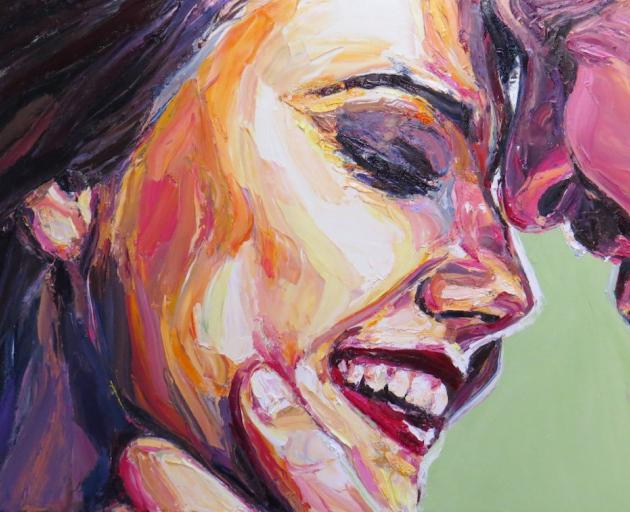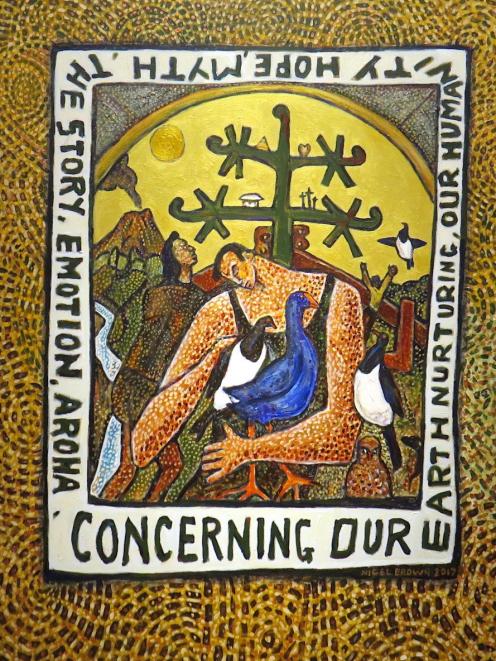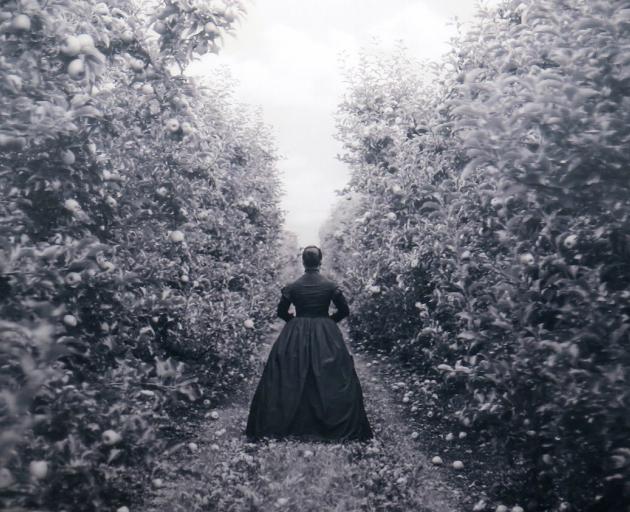In this week's Art Seen, James Dignan looks at exhibitions from Sam Bennett, Nigel Brown, and Yuki Kihara
 Deuce, by Sam Bennett
''Homecoming'', Sam Bennett (The Artist's Room)
Deuce, by Sam Bennett
''Homecoming'', Sam Bennett (The Artist's Room)

In ''Homecoming'' at The Artist's Room, Sam Bennett presents a series of strong, brightly coloured expressionist portraits.
The images are tightly cropped, focusing attention squarely on the face. In works such as Titian and Off the Record, the eye is drawn more strongly into the face by means of the heavily impastoed backgrounds, the concentric lines of which form a natural vortex.
In other works, such as Champagne Blonde and Summer, similar effects are combined with unusual colour combinations to create impressions of motion and the shimmering heat of the season respectively.
Bennett has varied from his previous approach by producing several works containing not one but two subjects. In Together, Deuce and Homecoming, two people face each other at close distance, the thin dividing line and lack of apparent personal space creating both tension and a feeling of intimacy.
This is particularly noticeable in Deuce, a work that deviates from Bennett's normal practice by presenting the faces in sharp relief against a flat background, edged with a thin line of white light.
The vibrant life shown in the larger-than-life works makes them impressive pieces, as does the bold use of dynamic strokes used by the artist to create them.
 Concerning Our Earth Nurturing, by Nigel Brown
''Concerning Nurture'', Nigel Brown (Milford Gallery)
Concerning Our Earth Nurturing, by Nigel Brown
''Concerning Nurture'', Nigel Brown (Milford Gallery)

Nigel Brown's latest exhibition, ''Concerning Nurture'', is an extension and renewal of, and progression from, the continuing series of works that he has forged over the past few years.
The majority of the works consist of Brown's now trademark style, showing the archetypical good keen man and his partner deep in wild New Zealand, encased within a frame of text. In these works, the focus is strongly on the nurture of the exhibition's title. The figures are seen cradling native birds and other New Zealand creatures against a background of their natural habitats; these are not the axe-wielding foresters of old, but are bush-knowledgeable environmental warriors.
The works predominantly seem more optimistic than many of Brown's recent paintings. The bright, pointillistic backgrounds have light, sand-and-gold colours, and the foreboding tension of previous images has abated - though still raises its head occasionally in images such as Uncertain weather.
In some paintings, Brown has made a clear break from his text-laden style. Arcadia with kiwis has the feel of post-impressionistic primitivism, more akin to Matisse or Gauguin than to Brown's normal work. More surprising still are the large-scale pieces, such as Fall of Water, that eschew the standard canvas format to invade the gallery space.
 Apple Orchard, Heretaunga, by Yuki Kihara
''Te Taenga Mai o Salome'', Yuki Kihara (Milford Gallery)
Apple Orchard, Heretaunga, by Yuki Kihara
''Te Taenga Mai o Salome'', Yuki Kihara (Milford Gallery)

Yuki Kihara's latest works, presented in ''Te Taenga Mai o Salome'' (''The Arrival of Salome''), make impressive use of a technique frequently encountered in low art but rarely found in a gallery setting. Kihara has used lenticular prints, similar in format to the ridged, seemingly three-dimensional images used for novelty postcards, to produce remarkable large-scale photographic scenes.
The exhibition is an extension of the artist's previous exploration of culture and personality, and the interconnectedness of the peoples of the South Pacific. Kihara focuses specifically on her own Samoan whakapapa and the legendary links between those islands and the Takitimu waka that brought the Ngati Kahungunu to Aotearoa.
The exhibition uses Kihara's iconic alter ego, Salome, presented in her standard back view silhouette, placing her in locations that resonate directly and ironically with both ancient and modern Ngati Kahungunu culture. The use of lenticular prints creates a bold focus on the character of Salome, a fixed and stable pivot around which the dynamo of landscape rotates.
In doing so, it forces us to identify strongly with the figure, placing ourselves in the midst of the three-dimensional waves, orchards and derelict factories of Kihara's images.












